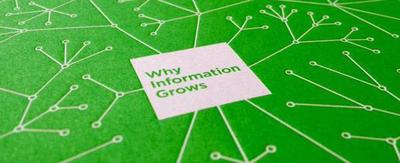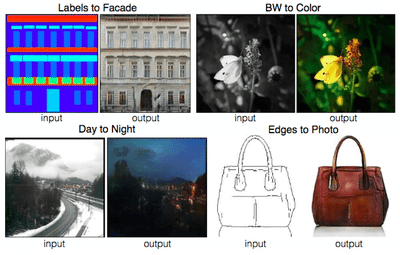My favorite scientific papers of 2016
It is almost the end of 2016 and this was a busy year for me, continuously traveling all over the world for conferences and new (scientific?) experiences. Despite my inexperience, I want to share some of my favorite papers published this year.
If you find this list (or idea) interesting, I ask you to write your list of favorite papers and share it with me! I am always interested in exploring others' scientific interests.
-
The TimeGeo modeling framework for urban mobility without travel surveys1. This paper is the nec plus ultra of the urban mobility modelization through mobile phone data. It starts with a simple flow-chart that describes people’s mobility, then it flies to a flexible extraction and simulation of daily trajectories. As always, Supporting Materials are painful to read :)
-
Scaling identity connects human mobility and social interactions2. Our mobility and communication patterns are extremely connected: one influences the other. We had a glimpse of it in the past literature3, but this paper establishes the formal link between them. Moreover, this work also allows to approximate social fluxes from mobility and vice-versa. This is great on a macroscopic scale, but what if we look at the socio-demographic information or different cultures?
-
Returners and explorers dichotomy in human mobility4. Power/scaling laws and macroscopic scales always look at universal behavior. What I like the most about this paper is that it looks at differences. Particularly, by looking at people’s recurrent movements, it finds that two well-separated mobility profiles of people emerge: returners and explorers. The former are inclined to go to previously visited places, while the latter has a tendency to wander between a larger number of different locations. This has a great impact on spending patterns, hasn’t it?
-
To explain or to predict?5. Have you ever wondered what are the differences between models that explains and models trying to predict future outcomes? This paper should be read by all data mining, machine learning, and econometric students!
-
Prediction policy problems6. Right after Galit’s paper5, this is a must-read article to understand the role of predictions for policy-makers.
-
The Atlas of Economic Complexity: Mapping Paths to Prosperity7. This book is from 2013, but is a crystal-clear explanation of the economic complexity theory by Hidalgo et al.8. I also suggest you their visualization tool if you want to understand the exports of your country. Do you want a general-purpose explanation of this? There is also a book!

-
Understanding congested travel in urban areas9. Should everyone choose the optimal route? Should drivers try to reach Nash equilibrium in the city? Should some drivers adjust routing behavior to achieve social good at the expense of their time? Super enjoyable paper to read! Grande Antonio!
-
Measuring Urban Social Diversity Using Interconnected Geo-Social Networks10. This paper aims at distinguishing between places that bring together strangers versus those which tend to bring together friends. Something in-between social science, urban theory and computer science. Nice!
-
Is this scaling nonlinear?11. Finally! FINALLY! After some evidence of the weak systematic acceleration (deceleration) of urban life in cities12, here we have a clear statistical analysis of Bettencourt’s work13. City scientists, read it!
-
Image-to-Image Translation with Conditional Adversarial Networks14. Mind-blowing paper that could be the future of computer science and machine learning. Just look at the image below to understand the capabilites!

The special mention, of course, goes to Jane Jacobs' The Death and Life of Great American Cities. Thanks to it I had the change to open my computer-scientist mind, work with Daniele Quercia, Cesar Hidalgo, and get to know a lot of people and researchers. Thanks Jane!
-
Jiang, Shan, et al. “The TimeGeo modeling framework for urban mobility without travel surveys.” Proceedings of the National Academy of Sciences (2016): 201524261. ↩︎
-
Deville, Pierre, et al. “Scaling identity connects human mobility and social interactions.” Proceedings of the National Academy of Sciences (2016): 201525443. ↩︎
-
Calabrese, Francesco, et al. “Interplay between telecommunications and face-to-face interactions: A study using mobile phone data.” PloS one 6.7 (2011): e20814. ↩︎
-
Pappalardo, Luca, et al. “Returners and explorers dichotomy in human mobility.” Nature communications 6 (2015). ↩︎
-
Shmueli, Galit. “To explain or to predict?.” Statistical science (2010): 289-310. ↩︎
-
Kleinberg, Jon, et al. “Prediction policy problems.” The American economic review 105.5 (2015): 491-495. ↩︎
-
Hausmann, Ricardo, et al. The atlas of economic complexity: Mapping paths to prosperity. Mit Press, 2014. ↩︎
-
Hidalgo, César A., and Ricardo Hausmann. “The building blocks of economic complexity.” proceedings of the national academy of sciences 106.26 (2009): 10570-10575. ↩︎
-
Çolak, Serdar, Antonio Lima, and Marta C. González. “Understanding congested travel in urban areas.” Nature communications 7 (2016). ↩︎
-
Hristova, Desislava, et al. “Measuring Urban Social Diversity Using Interconnected Geo-Social Networks.” Proceedings of the 25th International Conference on World Wide Web. International World Wide Web Conferences Steering Committee, 2016. ↩︎
-
Leitao, J. C., et al. “Is this scaling nonlinear?.” arXiv preprint arXiv:1604.02872 (2016). ↩︎
-
Strano, Emanuele, and Vishal Sood. “Rich and poor cities in Europe. An urban scaling approach to mapping the European economic transition.” PloS one 11.8 (2016): e0159465. ↩︎
-
Bettencourt, Luís MA. “The origins of scaling in cities.” science 340.6139 (2013): 1438-1441. ↩︎
-
Isola, Phillip, et al. “Image-to-Image Translation with Conditional Adversarial Networks.” arXiv preprint arXiv:1611.07004 (2016). ↩︎